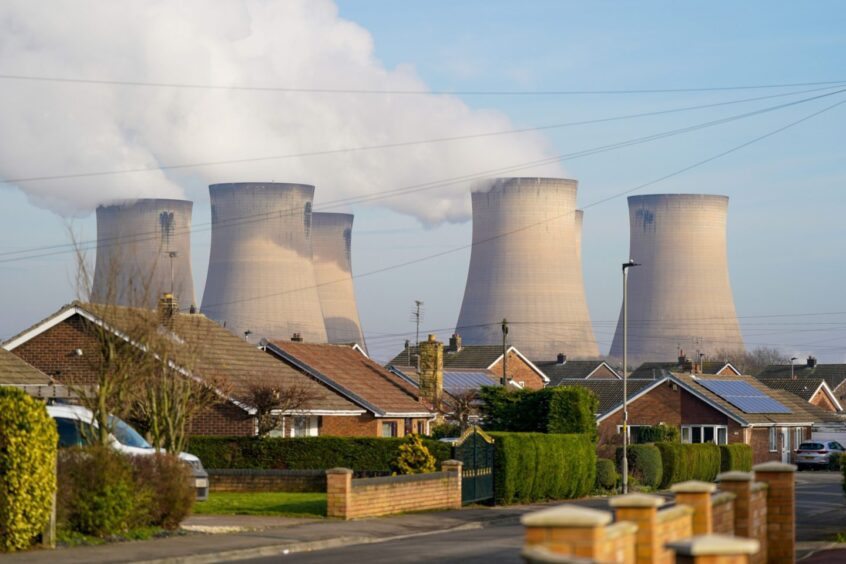
In an interview with Energy Voice, Drax UK BECCS programme director and chair of the Humber Energy Board, Richard Gwilliam, said decarbonising the Humber has the potential to have “the most impactful role in hitting decarbonisation targets of any CCS clusters in the country”.
He added that a key part of delivering this will be the development of bioenergy with carbon capture and storage (BECCS) at Drax Power Station, currently a central component of the UK’s most polluting industrial cluster.
“Government has already forecast that we’re not going to be able to meet the fifth and certainly not the sixth carbon budget without large-scale carbon removals, and there’s no other project that’s comparable in the UK – other than Drax,” Gwilliam told Energy Voice.
“We have planning consent at Drax Power Station to convert two of the four biomass units to BECCS. Each unit that we convert will allow us to take up to 4 million tonnes of CO2 out of the atmosphere per year.”
The carbon removed by Drax and other assets in the Humber would primarily be stored in permanent geological sites under the North Sea, but it could have other applications including as one of the key ingredients for SAF – the production of which is vital for decarbonising aviation and other sectors.
“I think that there’s scope under a Labour government for more novel ways that this infrastructure can come to fruition than what has been, as I’ve said, a winner-takes-all competition that’s relied too heavily on industry to answer,” said Gwilliam.
Critical geography
Gwilliam said he welcomed Labour’s proposed industrial strategy, adding: “It’s important that any government sets out a long-term view on the importance of industrial regions”. He pointed out that it could, in time, give businesses confidence that “the opportunity to deploy this form of vital technology (CCS) will happen in the region”.
“Because if it doesn’t happen here, it’s hard to see how we reach net zero,” he added.
“There’s a real risk that, if investment goes elsewhere, we lose the skills and opportunities that we have in the Humber. We need to prioritise a critical geography for keeping the lights on and make sure that £15 billion of private sector investment isn’t spent in Houston or Hamburg.”
Gwilliam is overseeing the transformation of the Drax Power Station into the world’s largest carbon-negative energy facility, enabled by CCUS. A key element of the Humber Industrial Cluster Plan (HICP) and Humber 2030 Vision, the former coal-fired power station is fuelling the ambition for the region to become a “SuperPlace” where CCUS, renewable energy and hydrogen “come together to be at the forefront of technical developments in the race to net zero”.
But the future of the Humber as a CCS hub was thrown into doubt in March 2023 after the region was left behind in the government’s last CCS funding rounds, losing out to other regions including Teesside and HyNet North West.
“I would reflect that things like GB energy and the new national wealth fund do have the capacity to help deliver the sorts of infrastructure that we need. But the key piece here is getting a pipeline built through the region,” said Gwilliam.
“We commissioned some work from Baringa who looked at the cost of deploying this technology and said that, to 2050, the deployment of two BECCS units at Drax Power Station would give an equivalent saving of £15 billion in whole economy costs, compared to other forms or other routes to try and decarbonise to the same level.
“So the way I’ve tried to contextualise this is that this is a straightforward lever that you can pull to help meet your carbon targets, which is more impactful and less interventionist.”
In March, Drax said it would explore a tie-up with the developers of the Viking CCS project which could see an additional route for sequestering biomass emissions.
Once operational, Viking is expected to be one of the largest CCS projects in the world, aiming to capture and store up to 10 million tonnes of CO2 a year by 2030.

